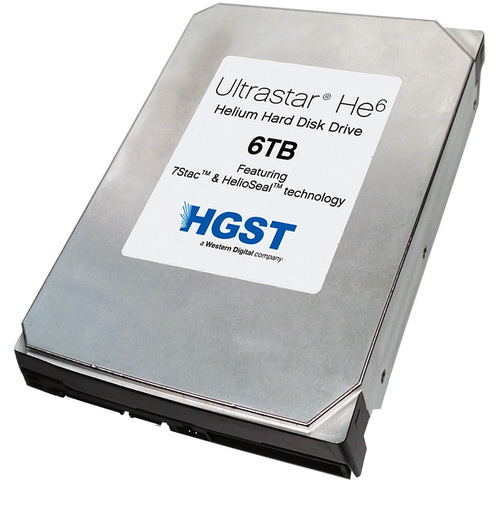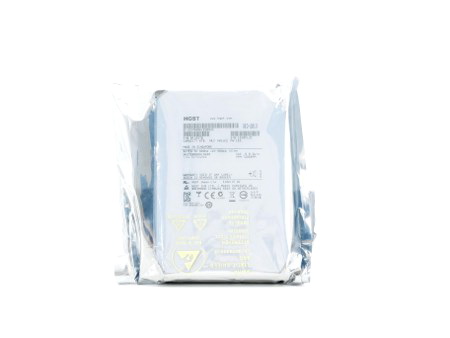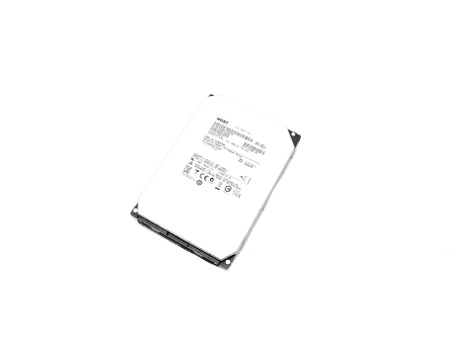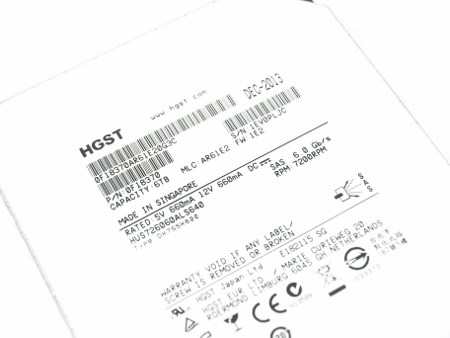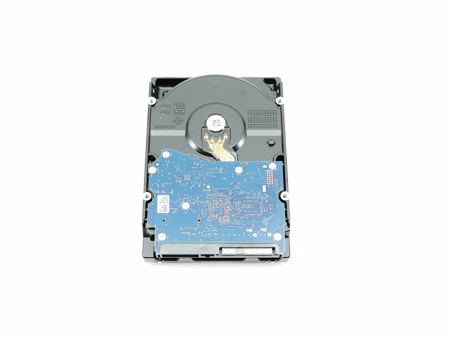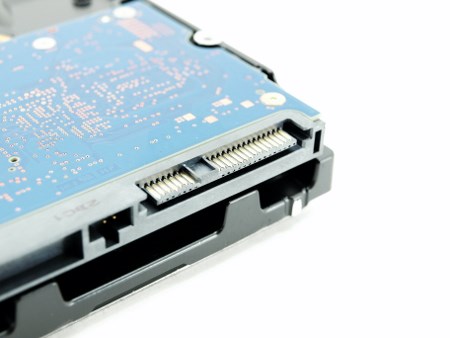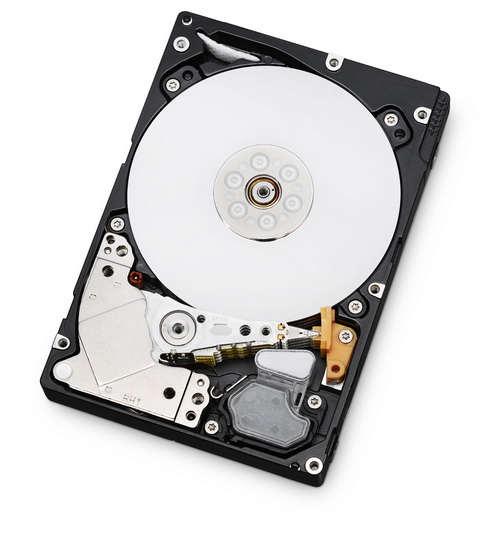INTRODUCTION
I've been using computers for almost 25 years now (14 of which professionally) and if someone asked me to choose a single hardware component that hasn't changed even a bit in terms of functionality since the day i ordered my very first system that would definitely be mechanical hard disk drives. Since 1989 I’ve used and tested well over 100 models (both consumer and enterprise ones) with capacities ranging from just a few Megabytes and up to several Terabytes but with the exception of SSDs and SSHDs (which is basically a marriage of both technologies) i can't say that the way HDDs function has changed, not really anyways. HGST took a step towards changing that roughly a year ago when they announced the upcoming Ultrastar He6 line of enterprise oriented hard disk drives and today after quite a bit of wait we finally have the SAS 6Gb/s variant with us.
HGST, a Western Digital company (NASDAQ: WDC), develops innovative, advanced hard disk drives, enterprise-class solid state drives, external storage solutions and services used to store, preserve and manage the world’s most valued data. HGST addresses customers’ rapidly changing storage needs by delivering intelligent storage devices that tightly integrate hardware and software to maximize solution performance. Founded by the pioneers of hard drives, HGST provides high-value storage for a broad range of market segments, including Enterprise, Cloud, Datacenter, Mobile Computing, Consumer Electronics and Personal Storage. HGST was established in 2003 and maintains its U.S. headquarters in San Jose, California. To find out more about HGST enterprise-class HDD, SSD and SW solutions, please visit www.hgst.com.
For the Ultrastar He6 line of HDDs HGST took a different path and so instead of using regular air inside the drive just like every HDD out in the market currently they decided to use the much lighter Helium gas. So since Helium has one-seventh the density of air it allows for all 7 disks/platters inside the drive to spin easier and thus faster due to less resistance/friction which in turn naturally results in reduced power demands and temperatures. It goes without saying that i don't expect to witness miracles in terms of read/write performance just by swapping air for Helium but if HGST is right in time this technological advancement could help reduce the performance gap between HDDs and SSDs while at the same time it could also improve reliability (the He6 already has a 2 million hours MTBF) and further expand the already large price/capacity ratio gap. For now we can only check the performance aspect of the Ultrastar He6 6TB SAS 6Gb/s drive so let's do it.
SPECIFICATIONS AND FEATURES

THE ULTRASTAR HE6
As expected we received our sample in bulk form so nothing but the drive was found inside the static-free bag.
If we exclude the large white sticker that takes the entire upper area the Ultrastar He6 is yet another 3.5" HDD.
Printed on the large sticker are the drives serial and part numbers, barcodes, capacity, firmware version, country of manufacture, electrical specifications, factory roll-out date, connectivity and several certification and warning logos.
At the rear once again we see that all of the crucial modules are placed on the interior of the PCB.
Aside the SAS power and data connector there are also two pins at the rear end of the He6.
TEST BED
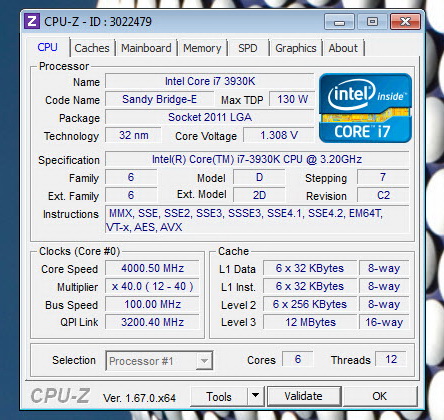

TESTING METHODOLOGY
Thoroughly testing hard disk drives may require time and patience but that's just about it. Of course that doesn't mean that one must take it lightly, at least not when people base their decision on your results. True many choose to only use 2 or 3 benchmarking suits in order to measure the performance of a drive or drives since quite honestly most benchmarking suites do tend to agree with each other (so it's not really the wrong thing to do) but we always like to take things a step further not because we have to but because we want to be almost 100% certain of the results we get and post in our charts.
SAS drive testing is more complicated than testing regular SATA drives and so although we use almost the same benchmark suites as with SATA tests in an effort to bring you the most accurate results across the board things are a bit different since we are required to configure/tweak some of those programs to address compatibility issues with the SAS card used. This may not be exactly "fair" for the SAS drive/s in hand since we test them with much heavier read/write loads in some of the suites used but that's the only way to get realistic results without taking into account certain card-specific performance boosts. So once again the benchmarking applications we use are the AIDA64 suite (former Everest Pro), HD Tune Professional (Partial Test/Full Accuracy), HD Tach RW (Full Bench), ATTO (2GB Length), Sisoftware Sandra Pro, Crystal Disk Mark 64bit (2000MB mode) and PCMark 7 (secondary storage suite). These benchmark tools are the best at what they do and as you will also see later on their results more or less agree. Each test is performed a total of 6 times and then the average is recorded into the charts. Temperatures are recorded using Hard Disk Sentinel and after 45 minutes of continuous testing in a 23 degrees Celsius temperature controlled room. Finally we also use an ExTech HD600 dBA meter on each of the drives (5cm away) in order to accurately record their noise levels, although if you don't turn off all system fans when doing so it's quite possible that you will never actually hear the drive working. The operating system as usual is a fresh installation of Microsoft Windows 7 Ultimate Service Pack 1 with every update installed up until the 4th of September 2014 while all SAS drive tests are performed using an LSI MegaRAID 9271-8i SAS/SATA III 6Gb/s card updated with the latest firmware and drivers.
TEST RESULTS - AIDA64 / ATTO


TEST RESULTS - HD TUNE PRO / HD TACH RW


TEST RESULTS - SISOFTWARE SANDRA PRO / CRYSTAL DISK MARK
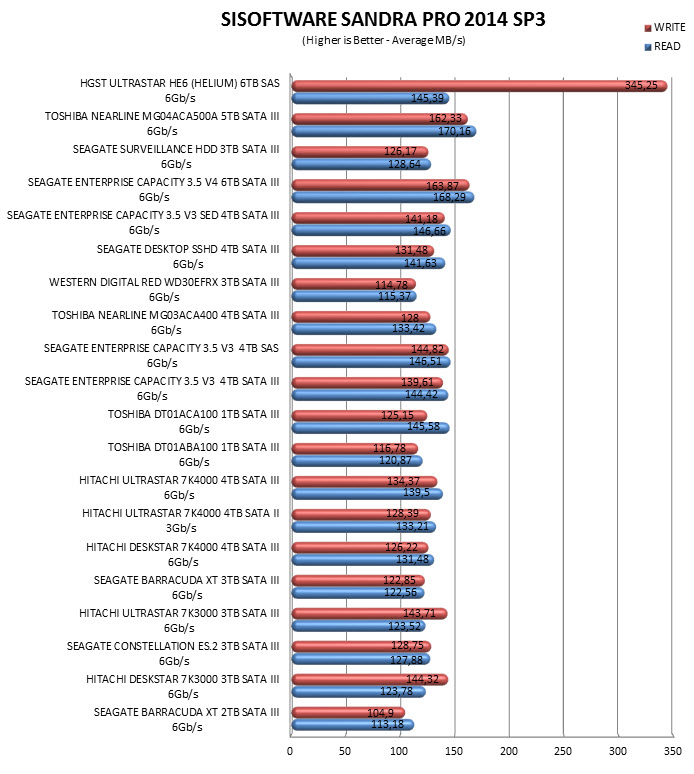

TEST RESULTS – PCMARK 7
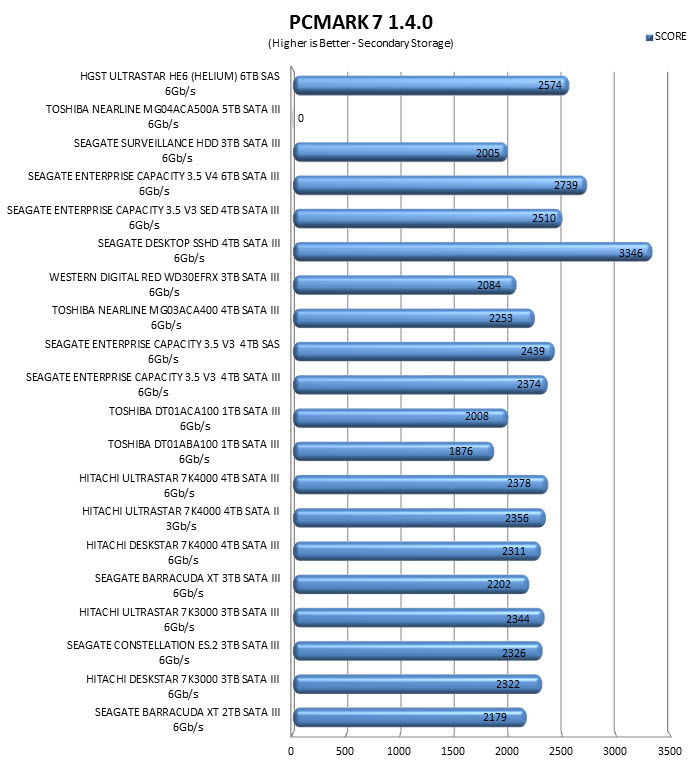
TEST RESULTS – TEMPERATURES / NOISE LEVELS


CONCLUSION
When i received word roughly 2 years ago that HGST (it was still Hitachi GST back then) was working on a brand new HDD model that used Helium instead of regular air i was very intrigued since like i mentioned in the introduction page we haven't really seen anything new in the HDD industry for as far back as i remember. Today although HGST was unable to send us the regular SATA variant (we hope they will in the very near future) we finally have a glimpse of what the future may hold but things are not as clear-cut as we'd like them to be. The reason we say this is because Helium doesn't seem to be making a difference both in the temperatures and noise levels of the drive since we've seen better from air-filled ones in the past. However let's not forget that the Ultrastar He6 makes use of 7 disks/platters so perhaps compared to a regular HDD with as many disks/platters Helium is indeed better but that's really not something we can comment on. On the bright side performance is almost excellent across the board and although the Ultrastar He6 is certainly not the best all-around HDD model in our charts still it does manage to surpass most especially in write speeds. Combine that with the highest to date 2 million hours MTBF (Mean Time Between Failures) and we think that the first Helium model by HGST could be the beginning of something unique.
Had we finished this review a few months back we would had turned down the Ultrastar He6 6TB SAS HDD model solely based on its price tag since back then it used to cost almost twice as much as for example the Enterprise Capacity 3.5 V4 6TB SATA III by Seagate. Today however things have changed and so currently you can find the drive for a price tag of USD532.95 inside the USA (Amazon.com) and for around 560Euros inside the EU. Of course price is still set high but compared to let’s say the Enterprise Capacity 3.5 V4 6TB SAS model it's roughly 10% more expensive so for a brand new attempt in the field that comes with such performance levels and an MTBF of 2 million hours we think that it's well worth the extra investment and that's why we give the Ultrastar He6 6TB SAS model our Platinum Award.
 PROS
PROS
- Enterprise Grade Build Quality
- 2 Million Hours MTBF (Mean Time Between Failures)
- Top Of The Charts Performance
- 6TB's Capacity
- Helium Drive
- 7 Disks/Platters
- Temperatures/Noise Levels
- 5 Years Warranty
CONS
- Price (For Some)

 O-Sense
O-Sense





